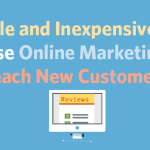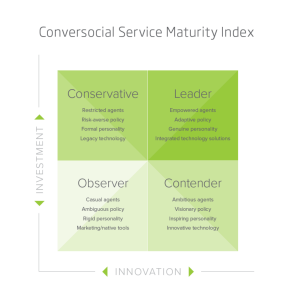
With 2016 coming to a close and New Year’s Resolutions being drafted, a majority of society is looking for ways to improve themselves physically, mentally, socially, and business-wise.
To come up with a million dollar business, you have to pay attention to the biggest trends that are industry-wide, company-centric, and skill-specific.
While many different industries are ripe for up-ticks in the new year, these are four that are already seeing huge attention for their potential.
1. Machine Learning
Machine learning is probably a term you have heard thrown around but never quite understood. Thoughts of the Terminator and Jarvis from Iron Man often get associated with this technology, even though it is not an entirely apt association.
In its simplest form machine learning is a software completing task A, with process B, and performance measurement C. To dive a bit deeper, you can imagine a graph of father’s height on the X-Axis and son’s height on the Y-Axis.
After plotting a lot of points on here you want to try to draw a prediction line so if you have a father’s height you can estimate the son’s height. Machine learning is able to find this line more perfectly than humans or even most statistical software. This is because machine learning continuously makes adjustments to its prediction formulas based on its measurement criteria; aka it is always getting better.
Applications here include stock performance prediction, estimating home values based on location, valuing professional athletes, detecting credit card fraud, etc. Anything where predictions need to be made, a computer is able to crank through much more data and learn from its trends.
In order to get started in this industry, you will first need a basic coding background (try taking an introduction computer science class at a local community college). From there learning more specific computer science logic centered around machine learning is available on Coursera, colleges, and some online resources.
Just as your programs will continue to get better, you too will need to take time to consistently improve because your program will only be as good as the time you dedicate towards it.
2. Virtual Reality
Ever since the Oculus Rift was unveiled in 2012, there has been a quality level of hardware, but a huge lacking of decent content for consumption.
Google and Oculus which have become the two largest content pushers both have a dilemma where less than a few dozen apps have any relevant amount of usage. This stems directly from a lower level of quality in comparison to what most consumers are desiring. What this means is that a huge opportunity is available for content creators to emerge and develop in VR.
As SAMO VR, currently rated one of the top content creators with their collaboration with Scooter Braun Production, puts it, the key to creating great virtual reality content lies in the ability to make the environment feel natural.
A great example of where failure can come from not holding true to this is with the Nintendo Virtual Boy, one of the first VR headsets from the 1990’s which gave people migraines since it did not feel natural.
First steps for getting into VR content creation includes having both the right hardware (i.e. 360 cameras, VR headset, production equipment, etc.) as well as a good understanding of coding and content creation. Unity is by far the most prominent virtual reality development software and a great place to stop with experimentation.
3. Financial Platforms
With the growth of Robinhood, a free stock trading platform, Fintech has exploded as an industry all together. The biggest opportunities lie in many of the tangential Fintech opportunities.
These include insurance, employee benefits, and other verticals which rely upon the usage of money management and investments to provide some service or financial offering for businesses or consumers.
Anyone who has gone through the anyone process of rolling over 401(k)’s, deciphering insurance premiums and coverage, looking into investments such mutual funds, bonds, options, etc. likely walked away with some level of headache.
Many startups are taking Robinhood’s lead in understanding many of the complicating details which confuse lay-people can be erased or made simpler in an attempt to create a more customer friendly platform.
Entering into this business model requires a deep understanding of the model. The founders of Robinhood worked as developers on Wall Street before realizing their business opportunity. Fintech’s largest growth opportunity is in simplifying an otherwise complicated product, but in order to simplify you first need to know the product offering inside and out.
4. Sales
Platforms such as Snapchat, Instagram, and Facebook hit 2016 hard with monetization and rolling out advertising networks. Due to their early-stage there is an enormous opportunity for selling products and targeting key demographics for insanely cheap. This low conversion price point means that it is now much more realistic to make a living off of selling products and not shoot all potential profits on the ads alone.
Not only is the early stage of the networks a major advantage, but more so than with Google AdWords, social media advertising sees better click rates. Social media ads have been sculpted in a much less intrusive way than Google Ads leading to this trend.
Your goal here is to find quality products and understand their consumers and how to use the various social media advertising networks. Some of the tricks for getting started is to optimize your sales funnels, understand retargeting systems using Facebook Pixel and the other corresponding tools for the other platforms, thinking about the specific details of your consumers, and most importantly doing A/B testing to constantly improve your campaigns.
Business & Finance Articles on Business 2 Community(110)
Report Post








